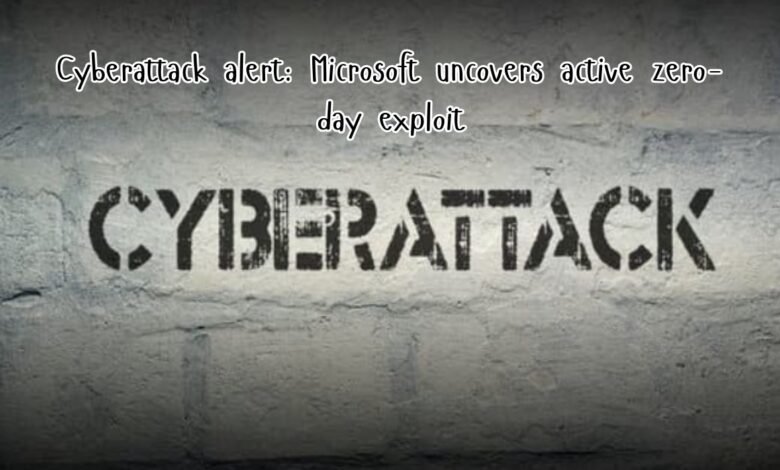Microsoft Spots Ransomware Groups Abusing Zero-Day Flaw
Microsoft discovers ransomware groups exploiting a critical zero-day vulnerability. Protect your systems now!

Microsoft identifies ransomware groups exploiting a zero-day flaw in VMware’s ESXi hypervisor, urging companies to apply the latest patch.
Several high-profile ransomware gangs have been exploiting a previously unknown software flaw to hijack IT systems easily, as reported by Microsoft. This zero-day vulnerability, identified as CVE-2024-37085, affects VMware’s ESXi hypervisor product. ESXi hypervisor allows users to run virtual machines on a physical server. This capability is particularly beneficial for companies because it enables them to operate several virtual servers on a single machine, optimizing resource use and improving efficiency.
However, Microsoft has indicated that ransomware groups have been taking advantage of this zero-day flaw in ESXi for several months. These organizations have been breaking into IT systems of businesses and stealing information. Ransomware strains BlackBasta, Medusa, Akira, and Scattered Spider are a few that are taking use of this vulnerability. The impacted companies have suffered large losses as a result of these criminal actors’ attacks, which have been carried out utilizing the weakness.
Attacker can exploit vulnerability, referred to as “authentication bypass,” by creating a group called “ESX Admins” and adding their own users to it. Attacker obtains complete administrative control over ESXi hypervisor by doing this. Ransomware group can encrypt the virtual machines, steal data from them and possibly spread to other parts of victim’s IT network using these privileges. Because it provides attackers with great deal of control over compromised systems this makes vulnerability especially hazardous.
Serious flaw in VMware’s ESXi hypervisor has been discovered and exploited by various ransomware groups. This flaw allows attackers to gain full administrative access to hypervisor, leading to data theft and encryption of virtual machines. Groups exploiting this vulnerability include some of most notorious ransomware strains, posing a significant threat to companies using the ESXi hypervisor.
Microsoft discovered flaw while investigating a BlackBasta ransomware attack on North American engineering firm. The attackers initially accessed the company’s network through a Qakbot malware infection that had spread to a computer.
Exploitation of ESXi Hypervisor Flaw
Microsoft uncovered a critical flaw while investigating ransomware attack by the BlackBasta group on a North American engineering firm. The attackers initially breached the company’s network through a Qakbot malware infection that had spread to one of the computers.
Once inside, the ransomware group stole the login credentials of two domain administrators within the engineering firm’s network. They then exploited the ESXi hypervisor flaw to gain full administrative privileges over the system. With these privileges, the attackers installed the BlackBasta ransomware on the virtual machines and other devices within the network.
Response to Threat
In response to this serious threat, VMware’s parent company, Broadcom, has released a patch to fix the vulnerability. However, Broadcom has rated the vulnerability as “moderate” in severity, a classification that has faced criticism from security researchers. These researchers argue that the flaw should be taken more seriously since ransomware groups are actively exploiting it.
Microsoft is urging affected companies to install the Broadcom patch immediately. They also recommend that companies check their ESXi hypervisors for evidence of the “ESX Admins” group, which indicates that hackers have already exploited the flaw.
How Flaw Was Discovered by Attackers
One mystery that remains is how the ransomware groups discovered the vulnerability in the first place. Microsoft suggests that the culprits may have purchased details about the zero-day exploit from other hackers. There has been at least one known sale of an ESXi exploit for $1.5 million.
Over the past year, Microsoft has noticed a trend where ransomware criminals target ESXi hypervisors in order to quickly and easily enable mass encryption. This shows that in order to have a greater effect on enterprises they target, ransomware operators are always coming up with new ways to strike.
- The 9 Best Features in macOS Sequoia
- Voice Cloning, AI Stickers and More: Filmora’s Latest Features
- Shocking! New Exoplanet Stinks Like Uranus!
Conclusion: Ransomware groups exploiting critical zero-day
Ransomware organizations have taken use of a serious vulnerability in VMware’s ESXi hypervisor, hence presenting a serious risk to businesses. Way vulnerability is being used to obtain complete administrator access, resulting in broad data encryption & theft, was made clear by Microsoft’s study into particular incident. Businesses are advised to apply the required updates and keep an eye out for these vulnerabilities.
FAQ
Q: Are ESXi ransomware groups abusing a zero-day flaw?
A: Yes, ransomware groups are exploiting zero-day flaw in VMware’s ESXi hypervisor.
Q: What is high-severity Windows vulnerability abused in ransomware attacks?
A: High-severity Windows vulnerabilities like “PrintNightmare” flaw have been abused in ransomware attacks.
Q: Are ransomware gangs hijacking IT systems?
A: Yes, ransomware gangs are hijacking IT systems by exploiting various vulnerabilities and deploying malware.
Q: Was the BlackBasta ransomware attack zero-day attack?
A: Yes, BlackBasta ransomware attack involved exploiting zero-day flaw in VMware’s ESXi hypervisor.



